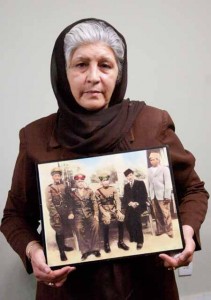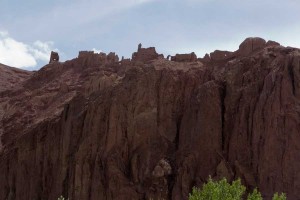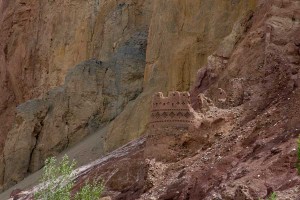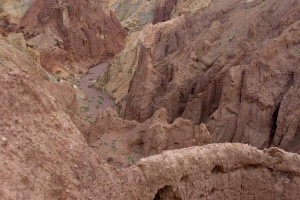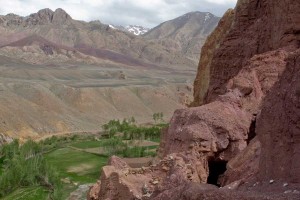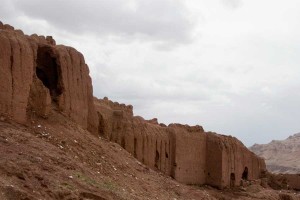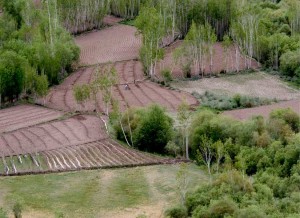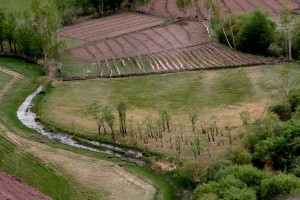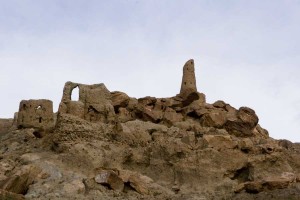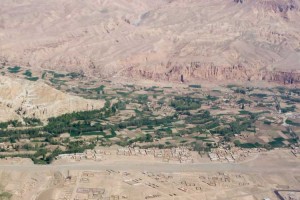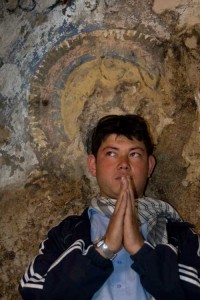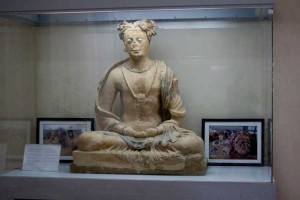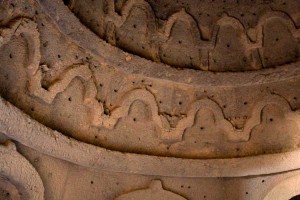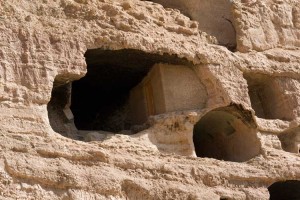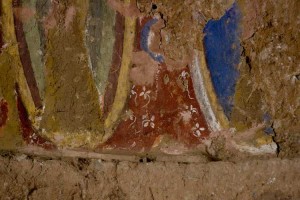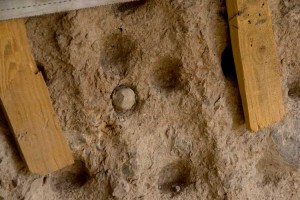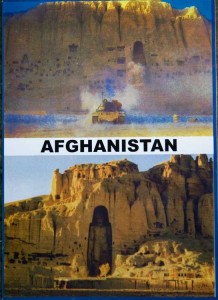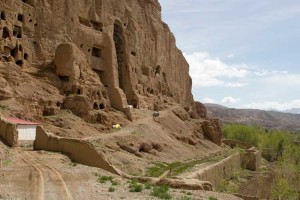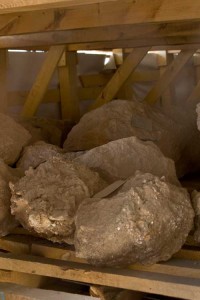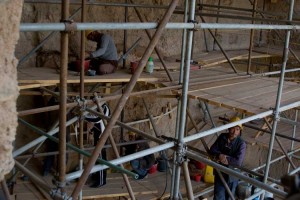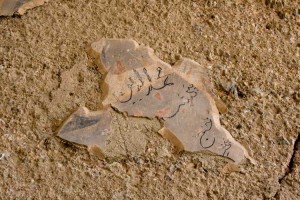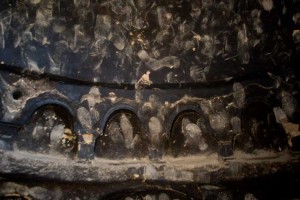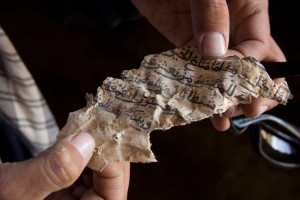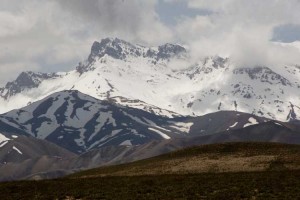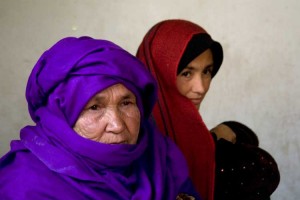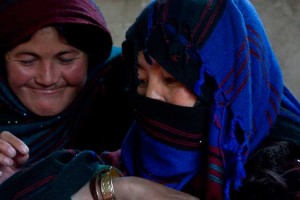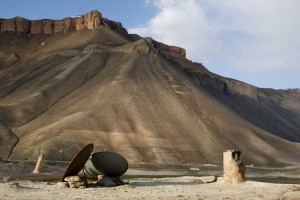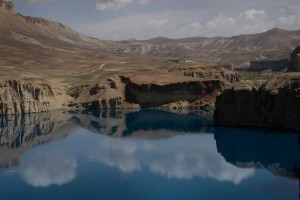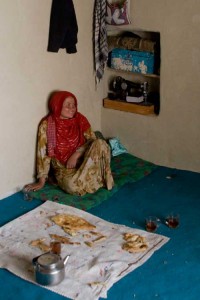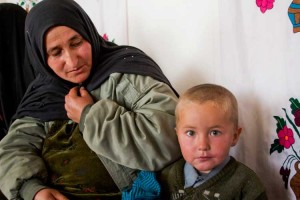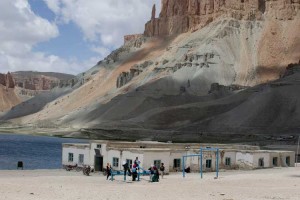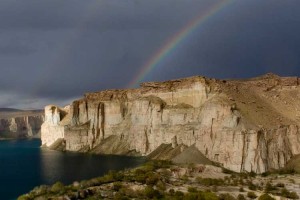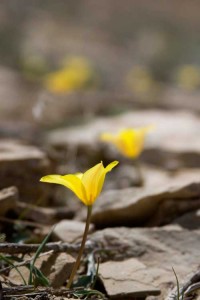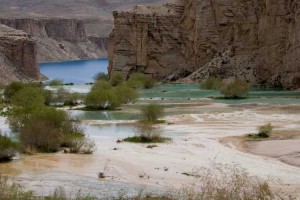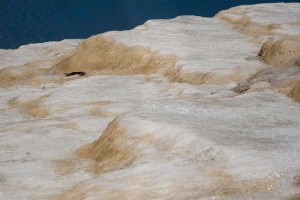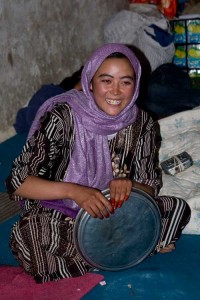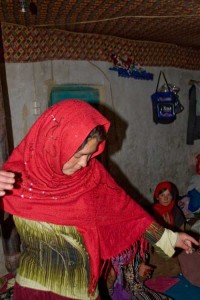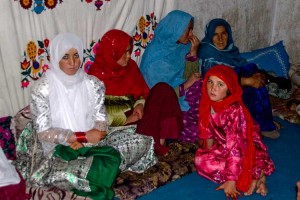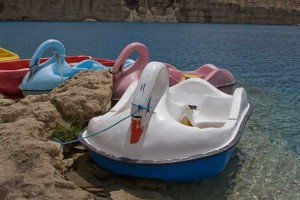Other
« Older Entries Newer Entries »Tajwar Kakar Part 4, Actions Taken
Friday, February 18th, 2011
Women did not sit passively by as their men were fighting the Soviets. Tajwar was a leader, but she couldn’t have done much without the support of other women working with her. When Tajwar first told me her story, I could imagine her life up on the big screen, an audacious adventure story and action movie. When I shared my vision with her, she laughed and said that she was only one of many, some more intrepid than she was. She told me that she was writing a book on heroic women from around the country and their daring escapades while fighting the Soviets. I can’t wait to see that book!
And there were others… just the other day I ran across a short article about Hajiyani Abeda, a woman who in her heyday commanded 200 male fighters and another article from 2006 about Bibi Ayisha Kaftar aka “The Pigeon” who “fought off the Russians, the Taliban and local rivals.”
Back to Tajwar and her account of several of her actions.
Peggy: After I returned from Afghanistan I heard a story about a foreigner who had been sitting on her balcony one evening around dusk when she heard a rumbling sound in the distance. Thinking that it was more Soviet tanks coming to her part of the city, she looked around below to see if she could see anyone on the streets but they were empty except for occasional Soviet patrols. As the sound grew closer, she realized that it wasn’t the rumbling of tanks, but the chanting of “Alahu Akhbar”, growing stronger and closer until the chorus surrounded her. She looked down into the neighboring courtyard and saw the family members shouting their defiance from the safety of their compounds.
Tajwar: Afghan women were the first to demonstrate after the Russians came. Allahu Akbar was the first one we did. One day the Russians killed a lot of soldiers so that night a lot of people came to our home to write a night letter. There was a lot of snow that night and I walked the streets at midnight giving the message that we were to say Allahu Akhbar the following evening . When we started, you would have thought that all the world is saying Allahu Akbar. The walls shook and it made the Russians afraid. We said it all night. I was with my brother. One lady we know put boiling water on our heads.
Another day I wrote a letter and again took it door to door. It said: “If you hate Russia, don’t go to work, don’t go shopping.” For 3 days all the shops were closed. We did it just to find out how much support we had. For me it was very dangerous. All the communists know me and know my story. They follow me everywhere.
Peggy: Imagine the effect: 18 year old Soviet youth, ethnic Russians as well as others from throughout the Soviet empire, many never having left their small-town homelands, all indoctrinated against religion, having been drafted and shipped off to Afghanistan, which was to them, the ends of the earth. Accounts I’ve read say that “Already in 1983 word had gotten around (among the Soviet recruits) that Afghanistan was a hellhole”.* So, imagine these fellows patrolling the streets when first quietly in the distance when gradually from all around them wells up a defiant “Alahu Akhbar” that goes on for the entire night. They can’t get away from it, they can’t see who is doing it, but they can hear hundreds, maybe thousands of voices rising up against them, while being impotent to do anything about it.
Tajwar: We decided to disrupt the celebrations of the first anniversary of the Communist regime in April of 1979. Teachers would be forced to bring their children to watch the parade. We gave the kids some balloons and toy explosives. When the parade started, the kids began popping the balloons and setting off the firecrackers. Women in the crowd started shouting “The Mujahadin are coming!” and the Communists in the parade ran for cover. The rest of the ceremony was canceled.
Another activity we planned was to disrupt the May Day Parade. I talked with certain students at the school and told them to collect wasps in tiny boxes. On May Day, the Russians had a big parade with tanks and then rows and rows of soldiers marching with their rifles. A big crowd gathered to watch them. At a certain point, our supporters in the back of the crowd begin pushing everyone toward the parade. When they got close enough, at another signal, the kids started going crazy and they ran in and among the soldiers, stooping low while they opened their boxes. You should have seen it! The wasps flew up the soldiers’ pant legs and into their shirts. Soldiers dropped their banners and rifles as they began swatting at the wasps. The whole parade was disrupted and then disbanded. We collected 25 rifles and small arms that day and we showed the Russians our power. These were the kinds of things we did.
*Klaits and Klaits, Love and War in Afghanistan, p 151.
Posted in Other | Comments Off on Tajwar Kakar Part 4, Actions Taken
Tajwar Kakar, Part 3, Freedom Fighting and Escape
Friday, February 4th, 2011
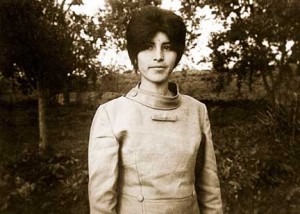 The Communists suspected that I was working against them so they got my family to watch me. They followed me when I left my house, especially my husband’s other wife. Her two sons worked for KGB. She was an uneducated woman but for 24 hours she watched me from her house. Whenever I would leave, they reported that, for example, I was wearing a gray skirt and blue scarf. They described me like that every time.
The Communists suspected that I was working against them so they got my family to watch me. They followed me when I left my house, especially my husband’s other wife. Her two sons worked for KGB. She was an uneducated woman but for 24 hours she watched me from her house. Whenever I would leave, they reported that, for example, I was wearing a gray skirt and blue scarf. They described me like that every time.
But to do my work, I needed to go to my friends’ villages to talk with the people. Thousands of freedom fighters came to visit me. For example, a popular commander came to visit me from Herat and another all the way from Mazar Sharif. I didn’t have a car and everyone was watching for me. So, I would leave home wearing a burka. Then I went to a freedom fighter friend’s house and changed into peasant clothes and my burka. All of the roads had checkpoints, but I went by donkey and they ignored me.
But one year, I was 7 months pregnant and I couldn’t go by donkey anymore and sometimes the Russians attacked the villages and I couldn’t run anymore in my condition, so I stopped going to the villages. Instead I just waited for my child and I worked at home. When I was nearly due, they wouldn’t let me go to the doctor to check myself and after 10 months were finished, I couldn’t deliver the child. Finally, I was home alone when I birthed my baby.
When my baby, my seventh, was born, the Communists made a plan to arrest me again and give electric shocks to my baby to get me to talk. This baby is now in Australia at the university studying journalism. A week after the birth I got a report that they would arrest us. So, at midnight that very night, my husband, my six other children and I walked over the mountains to Kabul. Sometimes we took the roads in areas that were empty of Russian soldiers and rode a bus or car. When we came to the areas where they had checkpoints, we walked in the mountains. It took us a week. (It’s a 12 hour drive when the roads are good.)
I remember in that year that they killed a lot of people, raped a lot of women and killed a lot of children. At one point, we got on a bus that was full of escaping women. When we arrived in Taloqan, a man came and told the driver to hide everything. I was sitting behind the driver and heard everything. He said that the Russians had blocked the road and they were looking for one woman. I understood that they were looking for me.
I told the driver to please wait. There were a lot of women and children in the bus without their men, so I told my husband to go bring them water. The bus driver was irritated and asked, “Why are you changing my schedule?” I asked him to please stay for 30 minutes while they bring water. When we finally left, another bus had taken our turn in the convoy. They shot that bus with a rocket and all the people in it died. In the line of 70 cars, just our bus remained unharmed and also three people from another bus. It was amazing because when I left, I only took my Holy Koran. I didn’t take my gold, I didn’t take anything. I just took my Holy Koran. When they tried to shoot our bus, they couldn’t shoot. One Hindu lady whose family was in the other bus came covered in blood and I took her inside ours. When she saw the Koran, she said that they can’t shoot this bus because I opened the Koran for our Allah to save us.
Only our bus arrived in Kabul safely. Some friends there explained that they had put my picture everywhere and a price on my head. One warned us that my life was in danger so we decided to evacuate to Pakistan. After 7 days some men came from Gazni to guide us. We bought some wedding party dresses from the bazaar and sent my brother to buy the bus tickets. He told everyone we were going to a wedding party in Kandahar but we got off the bus early and made our way to Gazni. When the way was safe, we continued to Pakistan. This was 1984.
Posted in Other | Comments Off on Tajwar Kakar, Part 3, Freedom Fighting and Escape
Tajwar Kakar part 2 Life under the Communists
Friday, January 21st, 2011
 My mother engaged me when I was 12, I was married at 14 and had my first child at 15. My husband was Uzbek (which means that he spoke Uzbek as a first language and he had many customs I wasn’t used to. I was his second wife. He was a very powerful man and was always having guests over. So, every other night I had to prepare large dinners for them as well as keep up with my school work (I was in 8th grade when I married) and take care of my children. I never had any help, I did all the work myself.
My mother engaged me when I was 12, I was married at 14 and had my first child at 15. My husband was Uzbek (which means that he spoke Uzbek as a first language and he had many customs I wasn’t used to. I was his second wife. He was a very powerful man and was always having guests over. So, every other night I had to prepare large dinners for them as well as keep up with my school work (I was in 8th grade when I married) and take care of my children. I never had any help, I did all the work myself.
Before the government changed, I had a normal life, a happy life. I finished my schooling and taught for 5 years in Kunduz high school. And after that I became headmaster. But when the government changed. and the king’s cousin, Daoud came into power the Communists began trying to register people. All of my husband’s family became members of the communist party. They especially wanted me to join because my father had been so powerful and so popular, But I rejected it. And so, I was the first woman who got fired from her job. For 3 months I stayed home but eventually they assigned me to another school and watched me very closely so that I couldn‘t contact my friends.
After a year, they sent me to Kabul and every subsequent year they sent me to a different school and gave me different subjects to teach. Every week they came into my classroom and pushed me to join the Communist party. They promised to give me a good position. They offered to send me to Russia or Poland to get my Master’s degree, but I refused it all, knowing that I would be forced to become Communist. They send me from school to school so I wouldn’t have a chance to make friends. But that was a good chance for me. I found a lot of my friends and my teachers and old students. During these 4 years they were arresting people twice a month . They arrested me in 1980. At that time, my oldest child was 14 and my youngest was 5.
In early 1980, whenever the Communists saw any young men they conscripted them and sent them to war. At one point they had arrested 150 men and asked each of them who was working for the freedom fighter women and they gave my name. Three people were witnesses saying that I was the head of women freedom fighters in Kabul. At first they put me in a KBG jail to do an “inquiry”. There I was tortured with electic shock. A lot of people died there. After a month they put me in another jail for a year. The whole time I refused to give any names or information and after a year I was released.
When they let me go, they made me sign a letter saying that if they find that I have any connection with freedom fighters, they will kill me. I signed that paper. When I got out they sent me back to Kunduz and I found that they had punished my children in a different way by telling them bad things about me. At the same time, the Afghan Communists were attacking villages, people’s houses, raping their women and killing their husbands and their children. So I became the freedom fighter leader in that city.
So, they sent me back to Kunduz and I found that they had punished my children in a different way by telling them bad things about me. At the same time, the Afghan Communists were attacking villages, people’s houses, raping their women and killing their husbands and their children. So I became the freedom fighter leader in that city.
Posted in Afghan Women's Project, Other, Peggy Kelsey, Tajwar Kakar, women | Comments Off on Tajwar Kakar part 2 Life under the Communists
Tajwar Kakar Part 1, Birth Story plus 2011 Update
Sunday, January 9th, 2011
I’ll begin 2011 with the amazing birth story of Tajwar Kakar, a woman I met on my trip in 2003 and again this past spring. I’d love to see her life portrayed on the big screen.
Tajwar Part 1 Birth Story
In 1948, Tajwar’s soon-to-be father was commissioner of the border between the Soviet Union and Afghanistan. The Russians* had gotten control of the Amu Darya River, also known as the Oxus, which runs along the northern side of Afghanistan, and were trying to make the border on the Afghan side of the river. “My father didn’t let them,” Tajwar told me. Six times before, Afghans had tried to negotiate a mid-river border, but had failed. “My father was brought from his post in Farah Province to meet with King Zahir Shah and head up the delegation. Before he left, my grandmother told him that my mother was pregnant. He told my mother that it doesn’t matter whether this child is a girl or a boy, but ‘if I get the river from Russia then it will be a lucky child for me. If I lose this river and Russia makes the border inside Afghanistan, this will be an unlucky child and I never want to see its face.'”
“So every time my grandmother prayed she would say ‘Allah, please help that man. This is an innocent child. When he says he will do this he will because he‘s a very strong Pashtun.’ My grandmother prayed every day that my father would get the river back. On the same day I was born he won back the river.”
“When he got the river he called to his people and told them to bring my child to the border. My grandmother said that I was too young but some people came and made a basket from branches and some very nice cloth. I was put inside and they took off for the border. More than 5000 people followed. When I arrived, my father put me in the boat and we went out into the river where he gave me the name Tajwar which means crown.”
“When he got back to Kabul, my father warned the king about Russia’s intention to invade Afghanistan and of his cousin, Daoud’s intention to help bring it about. Mr. Kakar was ignored, but his sympathies became known within the palace.”
“We moved to Kunduz when I was nine. Two years later, my father was poisoned by Daoud’s people because he was a powerful man and he didn’t support the Russians.”
*Tajwar always referred to the Soviets as Russians, but there were many Soviet troops from Kazakhstan as well as the other satellite states in addition to the Russians.
UPDATE
It’s been months since I’ve updated my blog. But with a new year comes a new determination to be more present in this space. 2010 brought my second Afghan Women’s Project trip to Afghanistan and its subsequent six months of interview transcription and image processing. Finally, my new presentation, Afghanistan 2010, a View from the Ground was crafted and debuted.
2011 will be the year of writing my book on the subject as well as giving presentations throughout the country. In addition to commentary on issues, I will be posting here in this blog elements from the book plus reviews of books pertaining to Afghanistan that I’ve read. And I resolve to post more regularly.
Posted in Afghan Women's Project, AWP 2010, education, Other, Peggy Kelsey, Tajwar Kakar, Uncategorized, women | Comments Off on Tajwar Kakar Part 1, Birth Story plus 2011 Update
Depression
Sunday, August 22nd, 2010
Posted in AWP 2010, Other, psychological health, Uncategorized, women | 2 Comments »
Bamiyan Province, Part 3
Saturday, July 17th, 2010
About 15km east of Bamiyan along the Silk Road lie the ruins of the ancient city of Zohak. Made entirely of red-mud bricks, it is also known as The Red City. Sitting atop a 350′ cliff of of red rocks overlooking the confluence of the Bamiyan and Kalu rivers, it guards the Eastern entrance of the long narrow Bamiyan Valley.
One would think that just being up so high would be defense enough, but in addition along the steep path were various guard towers and finally a tunnel one must pass through to reach the top.
Although the present remains were built in the 12th century by the Shansabani Kings, there is also evidence that during the time of the Hephthalite Huns in the 6th century, there was already a massive complex here. In fact, I saw pottery shards from the Kushan Dynasty period, which was dominant in this area during the 1st-4th centuries. In modern times, it became a Mujahidin stronghold during the war against the Soviets. At its peak, 3000 people resided here.
The story of how the city got its name was best told by Nancy Hatch Dupree:
“Zohak first appears in the Shahnama as a noble prince of Arabia, a devoted son well-beloved by his people. He became, however, possessed of the Devil who induced him to usurp his father’s throne whereupon the Devil appeared disguised as a loyal subject who asked to kiss the new king on the shoulders in token of his complete submission. No sooner had he done so, and vanished, than two black serpents thrust their heads out from where the kisses had been placed. Attempts to cut them off only resulted in their immediate return and their increased demand for human brains, the only food they would accept.
At the same time that Zohak was being seduced by the Devil, civil war broke out in Iran and Zohak marched in as the champion of one faction and was enthroned as the emperor of Iran. For a thousand years his rule brought terror and chaos to the land, but then the hero Fraidun was born. After many escapades, Fraidun finally succeeded in taking Zohak prisoner whereupon he took the dragon-king to a far off mountain peak and left him there to die. The Shahnama ends the tale here but, typically, Afghan legend goes on to elaborate by saying that, deprived of their daily meal of brains, the serpents turned on Zohak, bit into his scalp and fed upon his brains until he died.”
My guide told me that people believe that this city with its fertile valleys was the royal abode of Zohak.
I’ve read that in 1222, Genghis Khan sent his favorite grandson to deal with the Shansabani kings who responded by slaying the young general. As revenge, Genghis sent his warriors to storm the citadels. Every living thing in the valley was slaughtered. My guide told me that this actually happened in Gogola, The City of Screams which overlooks the Buddha site in Bamiyan.
Posted in Afghan Women's Project, archeology, AWP 2010, environment, Other | 1 Comment »
Comments on the Peace Jerga
Thursday, June 10th, 2010
(This commentary was written by Mahbouba Seraj, Women’s Programming Manager. Peggy’s commentary is at the end.)
Afghanistan’s Peace Jirga is all over (at least for now) the world’s news. Media is full of commentaries and criticism about the jirga, women’s participation, what should have happened and what should not have happened. I know for some it was very disappointing and very negative. But to me, as a 62-year old Afghan woman, it was a very different perspective. I have seen and been a part of women’s struggle in this country from the day when women were told not to wear their chadaris until the moment when women were selected as Cabinet members; from when women were enrolling in universities to when women were becoming doctors, engineers, etc.
This jirga was not a failure. It was not a complete success but it was definitely not a failure. I would hate to believe (or if the world believes, I would like to correct) that the Afghan women who are a part of the Afghan Women’s Network (AWN) [AWN held a “pre-jerga” for women which I attended, to talk about women’s participation] had nothing to do with the number of women participants in the jirga and that if it wasn’t for Secretary of State Mrs. Clinton, women’s participation would not have happened. I am not saying that Mrs. Clinton’s suggestion didn’t have any effect because I am sure it did and on behalf of all of us, I thank her. However all of us in this city worked too hard to be disregarded like this!
Comments suggesting that women’s participation was primarily the result of Mrs. Clinton, do not help the Afghan women, or their unity, or their cause….. Don’t forget that this is Afghanistan. We are the same sisters, mothers, wives and daughters who were looked upon in the first jirga as lepers. Then, we were not acknowledged, looked at, listened to, let alone talked to. Let’s not compare Afghanistan with the rest of the world but rather to Afghanistan of 10 years, 8 years or 7 years ago.
Our battles and struggles are still ahead of all of us; we need to do a lot of work; unifying our sisters should be our number one priority. I saw things from our so-called sisters who were against each other that were unbelievable. We need to learn to support each other first. We have a lot of work ahead of us. This peace jirga was really what the people of Afghanistan want. And they don’t want to fight anymore. They don’t want to die in the hands of the national army, international militaries, the Taliban, Al Qaeda, or each other. They want to live.
Of course there was a lot that was not accomplished…. That is because we women are not united. We all think “I know better; what does she know?; who does she think she is?”. Let’s take it one step at a time .. hopefully forward!
*********************************************************************************************************
Peggy’s commentary:
This last was an ugly phenomenon that I saw and also heard about—how Afghan women are often putting each other down, refusing to participate if “she” was going to be involved, etc. If women could unite their efforts, or at least not denigrate the efforts of others, change for women would happen much more quickly. Like with the ethnic antagonisms, I see hope for change with the young people who identify as Afghans first rather than their ethnic identity and with young women who see the female rivalry as a barrier to the progress for women that they want to see.
The other issue is about the rapidity of the changes we want to see. Of course we want all women worldwide to have the freedom and an economic situation that can help us reach our full potential as human beings. But I have seen in Afghanistan and other places, how well thought out, carefully strategized, person to person, comprehensively based efforts (which of course all take time) toward this goal can have a deeper and longer lasting effect as it engages the wider society. One needs to look at Afghanistan with a long term view.
Posted in Other | Comments Off on Comments on the Peace Jerga
Bamiyan Part 2
Friday, June 4th, 2010
[Sorry to take so long to get this post up. Now I’m back in Austin and beginning to go through my interviews and photos. It’s a mountainous task! I will continue to write as I go through this process.]
Bamiyan means “shining place”. It’s holy for Zorastrians as well as Buddhists.
The cliff with the “Buddha caves” dominates the landscape of Bamiyan City. It runs along the ancient Silk Road between the the Hindu Kush and the “Baba Mountains”.
Abbas, a well-versed guide from the Agha Khan Foundation cultural Center, showed me around.
Bamiyan was chosen by the Hephthalites as the place to settle because of the mountain barriers and strategic defense points overlooking the valley, it’s location along the Silk Road and the conglomerate cliffs that could be easily carved into housing.
The worst war (of the Soviet, civil and Taliban) was the one with the Taliban. There wasn’t so much fighting during the “Russian times”. The Soviet army perched on the few high places and easily controlled the area but mostly, people were allowed to live their lives. The Taliban period was quite bloody, however, as here the conflict included racial animosity (Hazara vs. Pashtun) as well as a fight between the Sunni Taliban and the (to them) heretical Shia. Hazara fighters holed up in the caves, which had inner passages from one to the other. 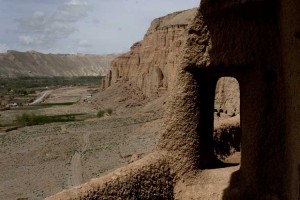 In some areas, water was also channeled inside. During and after the wars, 3000 or so families were living in the caves which kept them cool in the summer and relatively warm in the 6 months of harsh winter.
In some areas, water was also channeled inside. During and after the wars, 3000 or so families were living in the caves which kept them cool in the summer and relatively warm in the 6 months of harsh winter.
I was surprised to find that all of the 12,000 caves in the Bamiyan area are man made, the ones along the “Buddha cliff” hand dug at first by the Buddhist monks, and later by regular people to make their houses. Buddhists begain moving into the area in the second century and by the 5th century, 2,000 monks resided there
It took a full century to carve the Buddhas. The large one was covered with gold and diamonds and both were painted. They found heads of small Buddhas and small stupas below the wall with the Buddhas.
This excavation progresses in June and July when Professor Tarzai is free from his teaching duties. When he’s not there, the site is lined with plastic and filled in with dirt. 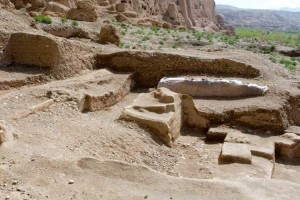
In Greece and Rome they found copies of a map of Bamiyan. It mixes Greek, Indian, Byzantine, Iranian Sasanid and Chinese architecture. It was made at the same time, using the different styles.
In this place with doors locked by UNESCO, the paintings are even better. The blue color was made of ground up lapis lazuli stones. The green was colored by a tree, yellow from herbs, and poppies made the red. These colors were mixed with either walnut or poppy seed oil. These date from the 5th to the 9th centuries, before oil painting was done in Europe.
Most of the Buddhas statues were just carved out of the soft stone cliff, but parts of them were modeled using a plaster of mud mixed with straw. The arms, which were also added, were secured in place with these
pock marks” which allowed the mud-glue and wooden pegs to adhere to the sides of the grotto.
The Taliban had a hard time destroying the Buddhas. First they shot at it, and when that didn’t work, they used dynamite. They blew charges three times a day. It took 1 week to destroy the small Buddha which was made of softer material and it took a month to destroy the large one.
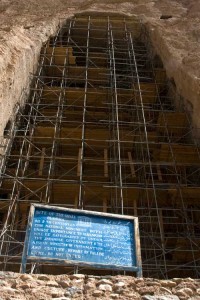
Once the Buddhas had been blown up, a lot of the rubble has now returned to dirt.
The plans are to do a partly fragmented reconstruction.
Here they are stabilizing the rocks. In this phase of the reconstruction, they are painting the rocks with chemicals to help solidify them.
In addition to destroying the Buddhas, the Mujahadin and Taliban also added their graffiti to the paintings
and had fun in the kitchen putting footprints on the ceiling.
As we were walking through the caves, Abbas found this crumpled handwritten piece of the Koran stuffed in a crack in the wall. We stopped at the tourism dept. on the way out to turn it in. They don’t know the exact date yet, but it may be several hundred years old.
Posted in Afghan Women's Project, archeology, environment, Other, tourism | Comments Off on Bamiyan Part 2
Places
Friday, May 14th, 2010
My breakfast table,
Facing a bed of deep-red, pink-magenta
And pale-tinged roses,
The peaceful breeze caressing my back
Birds calling out
A plate of two sunny eggs,
Flatbread and green tea before me.
Who would think I’m in Afghanistan?
****
All alone, carefully hidden in my tiny cave
While thunderous explosions
And flashes of light
crash around me.
Their deafening roar brings excitement
As I gaze across the impossibly deep-blue lake
Through the curtain of riotous rain.
When the deluge subsides
And I finally crawl out of my rocky shelter,
I’m met with a fully arched
Double rainbow.
Double blessings.
Double happiness.
And to think that I considered
Turning back at the first sight of clouds.
Posted in Other | 2 Comments »
Bamiyan Province, part 1
Thursday, May 13th, 2010
Hazarajat, the central highlands of Afghanistan
is home mostly to the Hazara people, those who are descendants from Central Asia, including Genghis Khan’s destructive hordes. For the past two weeks I’ve been visiting a few of their communities in the province of Bamiyan. I’d been invited by LEPCO to visit their Leprosy and TB clinics in Yakolang (and Panjao, (meaning Five Rivers) but the roads were flooded with the spring snow melt and rain.) As all villages and towns in the area, it is long and narrow, following the course of the river. 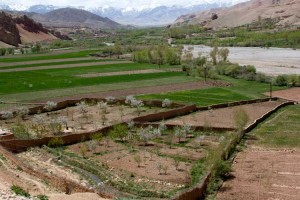 LEPCO has a different policy from other TB NGOs in that instead of just handing out the TB medicine, they collect the patients from their homes and bring them to the clinic so that they don’t spread the disease further while being cured. They feed and house the men and women for two months until the bacillus is no longer visible in their solar-powered microscope. I talked with a few of the women.
LEPCO has a different policy from other TB NGOs in that instead of just handing out the TB medicine, they collect the patients from their homes and bring them to the clinic so that they don’t spread the disease further while being cured. They feed and house the men and women for two months until the bacillus is no longer visible in their solar-powered microscope. I talked with a few of the women.
Many are from impoverished remote areas and they brought very little with them. They sat around all day waiting for their food and another day to pass. They asked me for help to improve their lives. TB spreads so quickly among these poor people because their diets are so deficient. The questions I came away with are how to help Jawad, the LEPCO director in his personal quest to aid these women. (and men. Although I didn’t talk with any of them, their problems are similar—lack of income in these areas where farming is so marginal.) One thing I’m looking for now is an organization who is willing to piggy-back on LEPCO’s infrastructure to provide a teacher (someone from among the educated in Yakolang for the Yakolang clinic, etc.) who can help the women utilize their time with some sort of an educational program. The other thing I’m working on is some sort of income producing activity that can bring in some badly needed cash. Right now, it’s looking like a carpet weaving project might be the most effective. We’re scratching our heads for other ideas.
From there I spent four glorious days in Band i Amir National Park. (Band means lake) The hotel wasn’t open for the season yet, so I stayed with Bulaghi and his family. Since there is no phone service, I just showed up—carefully stepping on the single stones that formed a pathway up the squishy wet hill that oozed with water leaking from the canal above. They opened their living room to me and I made myself at home.
The following day, Bulaghi, who speaks some English, informed me that he was leaving for Bamiyan that afternoon and that I was welcome to stay if language wouldn’t be too much of a problem. I settled into a routine, hiking in the morning, coming back for lunch and a rest, hiking again in the afternoon, returning for supper and electricity to process the day’s pictures. It was amazing how my pictures broke the ice, and Sabina and her kids looked forward to my return so they could see how I saw this area they’d grown up in all their lives.
Pictures opened doors that first afternoon as well when I was invited to attend the first birthday celebration of the village midwife’s first child.
I was welcomed into a room filled with about 20 women and a few children. The midwife spoke some English, so we could get the basics out of the way—I’m from America, married, 58 years old, and my daughters are 26 and 24. I asked if I could take pictures and they excitedly agreed. I’d take a few and then they would crowd around me to see the results.
It was great fun. I loved that on this trip, in this small village, I could collect the images of them on a flash drive and transfer them to the midwife’s computer.
On my second day I visited a school. In all of the schools I’d encountered the school day lasted a half day or less. In this school, there were two morning shifts. I talked with some of the teachers and it seems that nearly all of the children from the three nearby villages attend school. They study science, history, math, Islam, Dari and English. There are about 70 students from three villages and 15 teachers, most educated in Iran during their exile there. Many of the villagers I met enjoyed living in Bamiyan (or never thought about not living there) but some of the teachers felt stifled out there in the hinterlands and longed for a more stimulating life.
The hiking was great. After two months in Kabul with it’s horrific air pollution, ubiquitous soldiers and guns, an inability to walk anywhere and a struggle to remain fit by running up and down the stairs of the SOLA house, this opportunity to be out in gorgeous nature and walking for hours (one day 8 hours) alone was just what I needed.
The weather was chilly but would warm up by late afternoon. By mid afternoon, roiling thunderstorms would saunter in bringing brief showers and then move on. One day when they started to come, instead of turning back, I decided to do what an Afghan would do—find an outcropping to wait it out. When the first heavy drops began to fall, I found a small shelter with a good view of the lake. When I finally crawled out, before me, on the opposite side of the lake was a wall of black clouds from the storm that had just passed and a fully arched rainbow, with a bit of a second one as well.
On my way back, I used the plastic bag I’d brought with me to start picking up trash. I quickly filled that and half of a giant bag that I’d also found among the weeds. Since I’m always on the lookout for
flowers, the sight of trash was especially noxious. As I arrived at the row of stalls, one of the shopkeepers called me over and I showed him what I’d been doing. A park ranger was also there and began saying how bad Afghans are for trashing their park, but I explained that they aren’t bad, just unaware, (There are trashcans about, and the tourists are pretty good about using them, I think; it’s mainly the locals who have no sensibility about it.) and that since they had grown up with trash strewn about, it was like the myriad rocks and went unnoticed. I told them that Band I Amir is a world-class park, if only the trash were removed, both from the park and the village (where the visitors stay). He offered to accompany me the following day and we both set out on a fun adventure, collecting 4 bags on the way. Because he was guiding me, we crossed the Band i Panir (Panir means cheese) Calcium deposits,
waded through the flowing streams, and climbed up the other side.
That night, exhausted, just as I was ready to get into bed, a group of 5 women came and insisted that I join them at a party for their recently married friend who leaving the next day to join her husband. When they told me I should take pictures, I jumped up.
This party was the worst of the old and new. When we arrived, everyone’s eyes were glued to the TV set which had some American adventure program dubbed in Dari. When that finished, they tried to get the DVD player to function and a young boy spent a half an hour working on that while the women just sat around and dealt with the babies. Another woman was trying, without success, to get a tape player going. Meanwhile, one woman started beating a rhythm on a tea tray and several got up and danced,
(myself included, of course), but after a short while they gave up to wait for the technology. After close to an hour, the DVD player sprang to life and a few more women danced, one at a time, to a Bollywood version of MTV. By that time, it was late and we headed back home. Had there been no technology, there would have been dancing the whole time, likely with an instrument or two.
As for the bride, she sat there glum-faced the entire time.
The following day, a group of Belgians from the NGO, Mothers for Peace which has some excellent projects in Istalif, a picturesque village outside of Kabul, came to visit the lakes and bring me back to Bamiyan. I’m so glad I had changed my original plans and chosen to make a longer trip because they had a picnic on one side of the lake, drove around to the opposite side with the shrine and swan boats,
had a ride in them and we left.
Posted in Other | 2 Comments »
